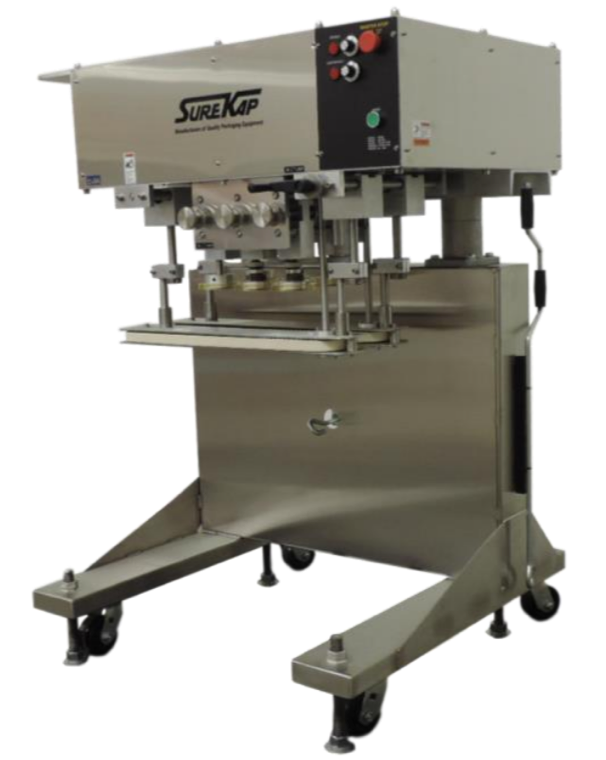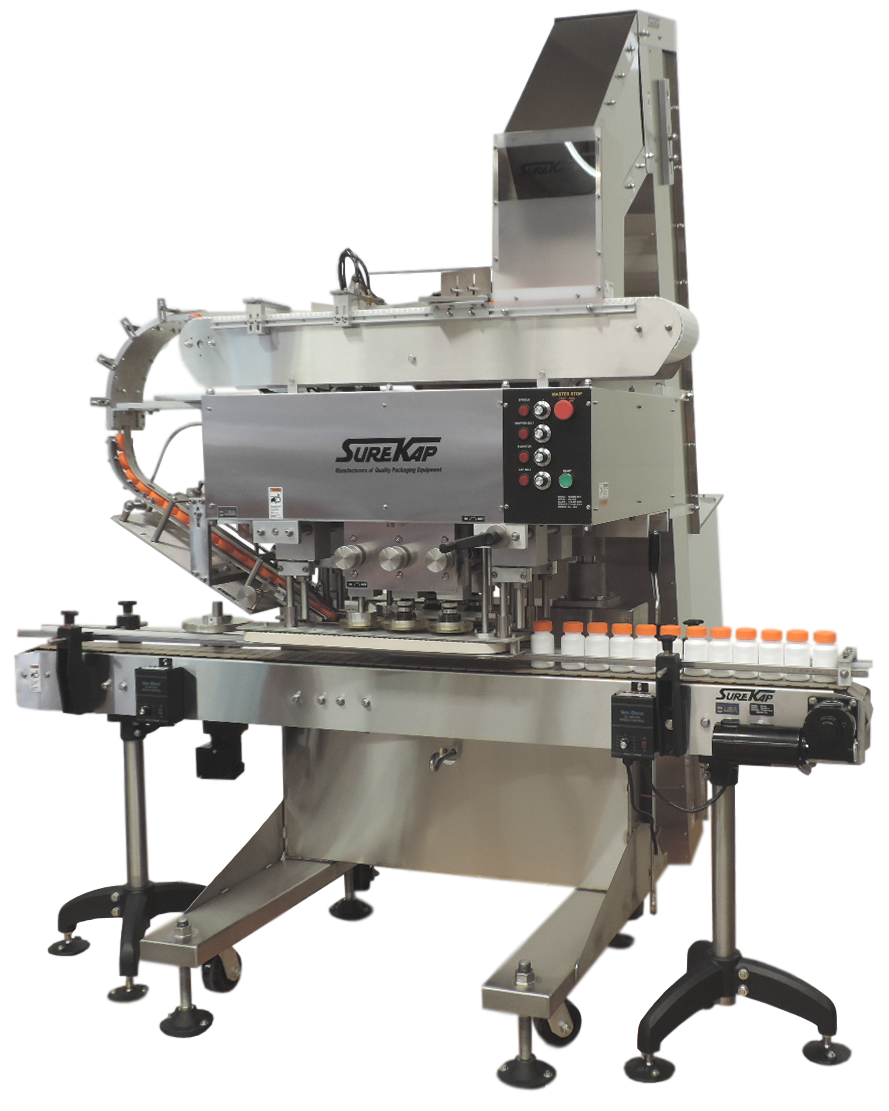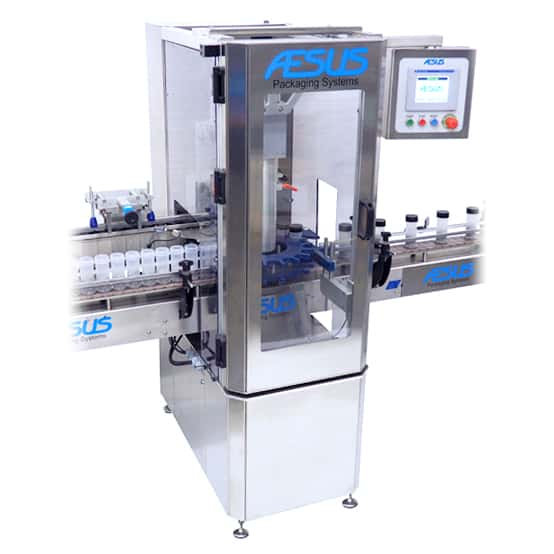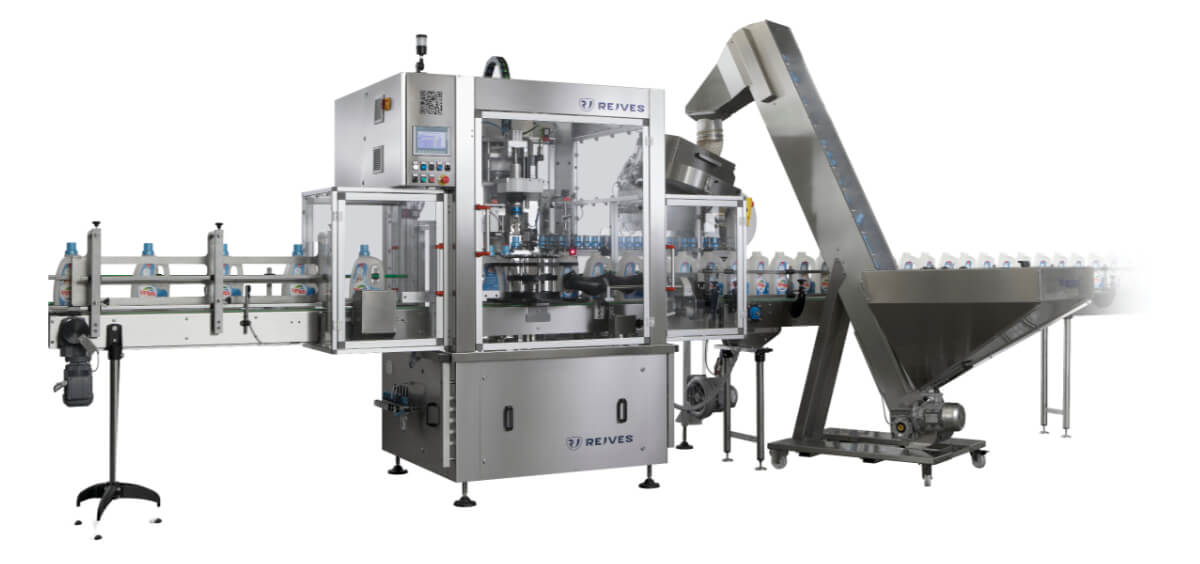There are two main styles of capping, Rotary and In-line. Both have their advantages. Rotary Cappers use chucks to apply and tighten/torque the cap onto the bottles. This style of capping typically has a greater consistency in cap application over in-line systems however are greater in cost. In-line systems are a better choice for those who need speeds under 100bpm and for those with multiple cap and/or bottle sizes. In-line Cappers can be modified to accommodate those ranges without the high cost of chucks and change parts. You can also have the best of both technologies by choosing a In-line Chuck Capper which is intermittent by design and generally only utilizes one chuck. These machines are also generally much cheaper than continuous rotary cappers however still require separate chucks and/or change parts for different bottle sizes.
Primary suppliers include, but are not limited to: SureKap, Acasi, Aesus, Rejves and Zalkin
The Operator applies a cap to the bottle prior to placing the bottle underneath a chuck which then spins and applies pressure to the top of the bottle once the foot pedal is pressed. Torque is adjusted by an air regulator.
.png)
Automatic torquers are commonly used to bridge the gap between semi-auto cap tightening and fully automatic capping. An operator can apply caps to moving bottles while on the line, they do not need to hold the bottle while the torquer tightens the cap. These units are also used as re-torquers after induction sealing or just as an extra step to ensure proper cap torque.

Applies caps to bottles in-line using rotary grip discs or quills/spindles to tighten the cap onto the bottle. Caps are sorted and fed into a cap chute which applies the cap to the bottle automatically for cap tightening.

These units are generally a higher cost than traditional in-line cappers which utilize spindles to tighten the cap. These chuck cappers are best used in applications with hard to apply caps. They also have more consistent application torque than in-line spindle cappers however due to the intermittent nature generally run a lower bpm than spindle cappers.

Rotary Chuck Cappers are used when higher speeds are required. They are very consistent in cap application and torque. They are available in a wide variety of sizes and styles to accommodate virtually any application.
